 W
WAn abatis, abattis, or abbattis is a field fortification consisting of an obstacle formed of the branches of trees laid in a row, with the sharpened tops directed outwards, towards the enemy. The trees are usually interlaced or tied with wire. Abatis are used alone or in combination with wire entanglements and other obstacles.
 W
WAn alcazaba, alcáçova or alcassaba is a Moorish fortification in Spain and Portugal. The word derives from the Arabic word al-qaṣabah (القَصَبَة), a walled fortification in a city.
 W
WAn Amba is a characteristic landform in Ethiopia. It is a steep-sided, flat-topped mountain, often the site of villages, wells, and their surrounding farmland. Such settlements were frequently located on these amba plateaus because they were very defensible and often virtually inaccessible from the ground.
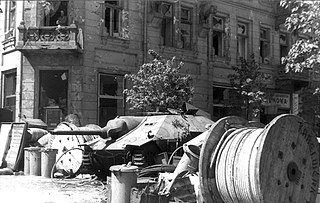 W
WBarricade is any object or structure that creates a barrier or obstacle to control, block passage or force the flow of traffic in the desired direction. Adopted as a military term, a barricade denotes any improvised field fortification, such as on city streets during urban warfare.
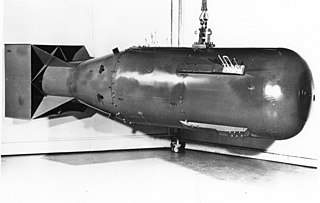 W
WA blast shelter is a place where people can go to protect themselves from blasts and explosions, like those from bombs, or in hazardous worksites, such as on oil and gas refineries or petrochemical facilities. It differs from a fallout shelter, in that its main purpose is to protect from shock waves and overpressure instead of from radioactive precipitation, as a fallout shelter does. It is also possible for a shelter to protect from both blasts and fallout.
 W
WA blockhouse is a small fortification, usually consisting of one or more rooms with loopholes, allowing its defenders to fire in various directions. It usually refers to an isolated fort in the form of a single building, serving as a defensive strong point against any enemy that does not possess siege equipment or, in modern times, artillery, air force and cruise missiles. A fortification intended to resist these weapons is more likely to qualify as a fortress or a redoubt, or in modern times, be an underground bunker. However, a blockhouse may also refer to a room within a larger fortification, usually a battery or redoubt.
 W
WA boma is a livestock enclosure, community enclosure, stockade, corral, small fort or a district government office, commonly used in many parts of the African Great Lakes region, as well as Central and Southern Africa. It is particularly associated with community decision making. It is incorporated into many African languages, as well as colonial varieties of English, French and German.
 W
WA border barrier is a separation barrier that runs along or near an international border. Such barriers are typically constructed for border control purposes such as curbing illegal immigration, human trafficking, and smuggling. Some such barriers are constructed for defence or security reasons. In cases of a disputed or unclear border, erecting a barrier can serve as a de facto unilateral consolidation of a territorial claim that can supersede formal delimitation. A border barrier does not usually indicate the location of the actual border, and is usually constructed unilaterally by a country, without the agreement or cooperation of the other country.
 W
WA border outpost, border out post, border observation post or BOP is an outpost maintained by a sovereign state on its border, usually one of a series placed at regular intervals, to watch over and safeguard its border with a neighboring state with which it may or may not have friendly relations. Such posts are staffed by border guards and are at all times connected by radio communication with ongoing border patrols in their region and the force headquarters in the interior of the country for their day-to-day functioning, passing on intelligence and for requesting supplies and any needed reinforcements in emergencies.
 W
WA breastwork is a temporary fortification, often an earthwork thrown up to breast height to provide protection to defenders firing over it from a standing position. A more permanent structure, normally in stone, would be described as a parapet or the battlement of a castle wall.
 W
WA Bremer wall, or T-wall, is a twelve-foot-tall (3.66 m) portable, steel-reinforced concrete blast wall of the type used for blast protection throughout Iraq and Afghanistan. The name is believed to have originated from L. Paul Bremer of the Coalition Provisional Authority, who was the Director of Reconstruction and Humanitarian Assistance for post-war Iraq, following the Iraq War of 2003, in the early years of the Iraq War.
 W
WThe Bulverket is the remnants of a large wooden fortification or bulwark at Lake Tingstäde on the island of Gotland, Sweden. When built, it consisted of a platform with houses surrounded by a double palisade with the entire construction around 250 m (820 ft) in diameter.
 W
WA circular rampart is an embankment built in the shape of a circle that was used as part of the defences for a military fortification, hill fort or refuge, or was built for religious purposes or as a place of gathering.
 W
WA citadel is the core fortified area of a town or city. It may be a castle, fortress, or fortified center. The term is a diminutive of "city", meaning "little city", because it is a smaller part of the city of which it is the defensive core. Ancient Sparta had a citadel, as did many other Greek cities and towns.
 W
WIn military science, a compound is a type of fortification made up of walls or fences surrounding several buildings in the center of a large piece of land. The walls can either serve the purpose of being tall, thick, and impenetrable, in which case they would be made of wood, stone, or some other like substance; or dangerous to attempt to scale, in which case they could be made of barbed wire or electrified. Compounds can be designed to double as living spaces and military structures in the middle of hostile territory or as a military area within a country's territory; they are also used by those who want to protect against threats to themselves or their property.
 W
WA crannog is typically a partially or entirely artificial island, usually built in lakes and estuarine waters of Scotland, Wales, and Ireland. Unlike the prehistoric pile dwellings around the Alps, which were built on the shores and not inundated until later, crannogs were built in the water, thus forming artificial islands.
 W
WA defensive fighting position (DFP) is a type of earthwork constructed in a military context, generally large enough to accommodate anything from one soldier to a fire team.
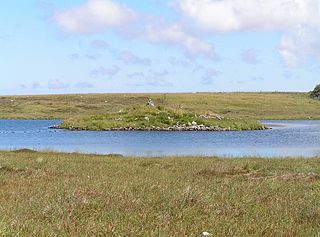 W
WA dun is an ancient or medieval fort. In Ireland and Britain it is mainly a kind of hillfort and also a kind of Atlantic roundhouse.
 W
WA fire support base is a temporary military encampment to provide artillery fire support to infantry operating in areas beyond the normal range of fire support from their own base camps. FSBs follow a number of plans; their shape and construction varying based on the terrain they occupy and the projected garrison.
 W
WFlak towers were large, above-ground, anti-aircraft gun blockhouse towers constructed by Nazi Germany. There were 8 flak tower complexes in the cities of Berlin (3), Hamburg (2), and Vienna (3) from 1940 onwards. Other cities that used flak towers included Stuttgart and Frankfurt. Smaller single-purpose flak towers were built at key outlying German strongpoints, such as at Angers in France, Helgoland in Germany.
 W
WA garrison is an architectural style of house, typically two stories with the second story overhanging in the front. The traditional ornamentation is four carved drops below the overhang. Garrisons usually have an exterior chimney at the end. Older versions have casement windows with small panes of glass, while later versions have double-hung windows. The second-story windows often are smaller than those on the first floor. Dormers often break through the cornice line.
 W
WA gord is an Early Slavic fortified settlement, sometimes known as a burgwall after the German term for such sites. Gords were built during the late Bronze and early Iron Ages by the Lusatian culture, and up to the 7th–8th centuries CE and beyond by other cultures, in what is now Central, Eastern and parts of Southern Europe. These settlements were usually founded on strategic sites such as hills, riverbanks, lake islets, or peninsulas.
 W
WGulyay-gorod, also guliai-gorod, was a mobile fortification used by the Russian army between the 15th and the 17th centuries.
 W
WA hardened aircraft shelter (HAS) or protective aircraft shelter (PAS) is a reinforced hangar to house and protect military aircraft from enemy attack. Cost considerations and building practicalities limit their use to fighter size aircraft.
 W
WThe Himalayan Towers, also called Stone star-shaped towers, are stone tower houses built for defensive purpose, found mostly in Kham, a region of Tibet, as well as in the area inhabited by the modern Qiang people and in the historical region inhabited by the Tanguts.
 W
WKotta mara is a type of floating battery or fortified raft from Borneo. It is used by native Bornean in warfare, its usage rose prominently during the Banjarmasin war (1859-1906). Kotta mara is used in riverine warfare, as an armed vessel or simply a blockhouse or fortification to prevent enemy advance in the river.
 W
WKraal is an Afrikaans and Dutch word, also used in South African English, for an enclosure for cattle or other livestock, located within a Southern African settlement or village surrounded by a fence of thorn-bush branches, a palisade, mud wall, or other fencing, roughly circular in form. It is similar to a boma in eastern or central Africa.
 W
WKsar or qsar, plural ksars, qsars, ksour or qsour, is the North African term for "fortified village," from Arabic qaṣar (قَصَر), itself possibly loaned from Latin castrum. The term generally refers to a Berber fortified village.
 W
WOstrog is a Russian term for a small fort, typically wooden and often non-permanently staffed. Ostrogs were encircled by 4–6 metres high palisade walls made from sharpened trunks. The name derives from the Russian word строгать (strogat'), "to shave the wood". Ostrogs were smaller and exclusively military forts, compared to larger kremlins that were the cores of Russian cities. Ostrogs were often built in remote areas or within the fortification lines, such as the Great Abatis Line.
 W
WA pillbox is a type of blockhouse, or concrete dug-in guard-post, normally equipped with loopholes through which defenders can fire weapons. It is in effect a trench firing step, hardened to protect against small-arms fire and grenades, and raised to improve the field of fire.
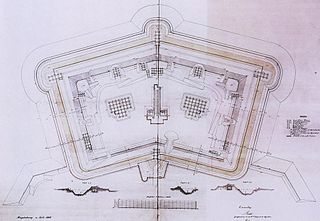 W
WA polygonal fort is a type of fortification originating in France in the late 18th century and fully developed in Germany in the first half of the 19th century. Unlike earlier forts, polygonal forts had no bastions, which had proved to be vulnerable. As part of ring fortresses, polygonal forts were generally arranged in a ring around the place they were intended to protect, so that each fort could support its neighbours. The concept of the polygonal fort proved to be adaptable to improvements in the artillery which might be used against them, and they continued to be built and rebuilt well into the 20th century.
 W
WA promontory fort is a defensive structure located above a steep cliff, often only connected to the mainland by a small neck of land, thus using the topography to reduce the ramparts needed. Although their dating is problematic, most seem to date to the Iron Age. They are mainly found in Brittany, Ireland, the Orkney Islands, the Isle of Man, Devon and Cornwall.
 W
WQalat or kalata (قلعه) in Persian, and qal'a(-t) or qil'a(-t) in Arabic, means 'fortress', 'fortification', 'castle', or simply 'fortified place'. The common English plural is "qalats".
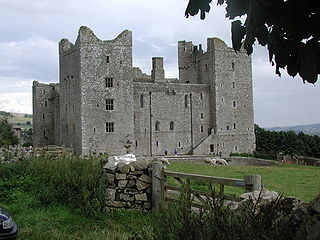 W
WA quadrangular castle or courtyard castle is a type of castle characterised by ranges of buildings which are integral with the curtain walls, enclosing a central ward or quadrangle, and typically with angle towers. There is no keep and frequently no distinct gatehouse. The quadrangular form predominantly dates from the mid to late fourteenth century and signals the transition from defensively to domestically oriented great houses. The four walls are also known as ranges.
 W
WA revetment, in military aviation, is a parking area for one or more aircraft that is surrounded by blast walls on three sides. These walls are as much about protecting neighbouring aircraft as it is to protect the aircraft within the revetment; if a combat aircraft fully loaded with fuel and munitions was to somehow ignite, by accident or design, then this risks starting a chain reaction as the destruction of an individual aircraft could easily set ablaze its neighbours. The blast walls around a revetment are designed to channel any blast and damage upwards and outwards, away from neighbouring aircraft.
 W
WA ricetto was a small fortified area used in medieval Italian villages for storing agricultural products, livestock, and working tools. It was also sometimes used for protection of the residents in case of attack, particularly from marauders and bands of soldiers and mercenaries from invading armies. A ricetto typically consisted of multiple buildings enclosed within a thick pentagonal perimeter, sometimes accompanied by a guard tower.
 W
WRingforts, ring forts or ring fortresses are circular fortified settlements that were mostly built during the Bronze Age up to about the year 1000. They are found in Northern Europe, especially in Ireland. There are also many in South Wales and in Cornwall, where they are called rounds. Ringforts come in many sizes and may be made of stone or earth. Earthen ringforts would have been marked by a circular rampart, often with a stakewall. Both stone and earthen ringforts would generally have had at least one building inside.
 W
WA sandbag or dirtbag is a bag or sack made of hessian (burlap), polypropylene or other sturdy materials that is filled with sand or soil and used for such purposes as flood control, military fortification in trenches and bunkers, shielding glass windows in war zones, ballast, counterweight, and in other applications requiring mobile fortification, such as adding improvised additional protection to armoured vehicles or tanks.
 W
WA sangar is a temporary fortified position with a breastwork originally constructed of stones, and now built of sandbags, gabions or similar materials. Sangars are normally constructed in terrain where the digging of trenches would not be practicable. The term is still frequently used by the British Army, but has now been extended to cover a wider range of small fortified positions.
 W
WA schanze is, according to the specialist terminology of German fortification construction, an independent fieldwork, that is frequently used in the construction of temporary field fortifications. The word is German and has no direct English equivalent, although the word sconce is derived from Dutch schans, which is cognate to the German word.
 W
WThere are numerous prehistorical and early historical ringworks and fortification ramparts in Central Europe that have erroneously, usually colloquially, been given the name Schwedenschanze, which means "Swedish redoubt", a schanze being a hastily erected, military fieldwork.
 W
WA sconce is a small protective fortification, such as an earthwork, often placed on a mound as a defensive work for artillery. It was used primarily in Northern Europe from the late Middle Ages until the 19th century. This type of fortification was common during the English Civil War, and the remains of one such structure can be seen on Fort Royal Hill in Worcester, England.
 W
WA separation barrier or separation wall is a barrier, wall or fence, constructed to limit the movement of people across a certain line or border, or to separate peoples or cultures. A separation barrier that runs along an internationally recognized border is known as a border barrier.
 W
WA shell scrape, also referred to as a "shallow grave" or "ranger grave", is a type of military earthwork both long and deep enough to lie flat in. While similar to a defensive fighting position in that the purpose is to shield a single soldier from artillery, mortar and direct small arms fire, it is not intended to be used for fighting from.
 W
WA station was a defensible residence constructed on the American frontier during the late 18th and early 19th century.
 W
WIn military tactics, a strongpoint is a key point in a defensive fighting position which anchors the overall defense line. This may include redoubts, bunkers, pillboxes, trenches or fortresses, alone or in combination; the primary requirement is that it should not be easily overrun or avoided. A blocking position in good defensive terrain commanding the lines of communication, such as high ground, is preferred. Examples from history include Thermopylae, where the ancient Greeks held back a much larger Persian army, and Monte Cassino, which anchored the Winter Line in Italy in World War II.
 W
WTobrouk or Tobruk, is a type of fortified concrete defensive fighting position used to house mortar pieces, machine guns, small-caliber artillery pieces or as a shelter for snipers. Small in size, they are characterized by their circular shape, with free edges that allow shooting in different directions. They differ from casemates in that they lack protection from vertical shots due to having no ceiling.
 W
WTower and Stockade was a settlement method used by Zionist settlers in Mandatory Palestine during the 1936–39 Arab Revolt. The establishment of new Jewish settlements was legally restricted by the Mandatory authorities, but the British generally gave their tacit accord to the Tower and Stockade actions as a means of countering the Arab revolt. During the course of the Tower and Stockade campaign, some 57 Jewish settlements including 52 kibbutzim and several moshavim were established throughout the country. The legal base was a Turkish Ottoman law that was in effect during the Mandate period, which stated that no illegal building may be demolished if the roof has been completed.
 W
WA Viereckschanze is a rectangular ditched enclosure that was constructed during the Iron Age in parts of Celtic Western Europe. They are widespread in Germany, parts of northern France and also in some regions of the Iberian Peninsula, most notably in Portugal.
 W
WA wagon fort, wagon fortress, or corral, often referred to as circling the wagons, is a temporary fortification made of wagons arranged into a rectangle, circle, or other shape and possibly joined with each other to produce an improvised military camp. It is also known as a laager, especially in historical African contexts.